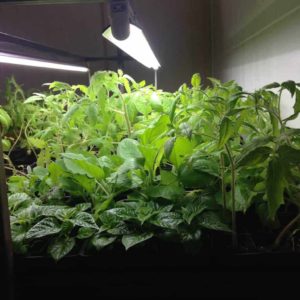The rosalea plant, also known as the potted azalea, is a lush plant with flowers that resemble blooming roses. Suitable for indoor growing, this plant is popular as a specialty gift because of its sweet fragrance and attractive buds that unfurl beautifully as the plant grows.
What Does a Rosalea Plant Look Like?
The vibrant colors of the rosalea plant vary from red to pink to peach to lilac, but pink petals are the most common. Some varieties have bi-colored petals. The oval-shaped leaves are dark green.
Rosaleas reach a plant height of 1 to 2 feet, with flowers that are 3 to 3.5 inches in diameter.
How to Grow a Rosalea Plant
The rosalea plant is ideal for indoor growing and thrives in the right conditions. When buying one of these plants, selecting a rosalea with a lot of closed buds will ensure a longer blooming period.
The plant pot of a rosalea is often covered with a burlap pot cover. Because these plants are so popular as gifts, their pots are sometimes covered with pretty wrapping paper or ribbon to make the gift extra special. Remove these covers in a timely manner to allow for adequate drainage.
Pot dimensions of 5 inches in height and depth allow for sufficient soil to encourage healthy root growth.
Rosalea Plant Care
The rosalea plant is easy to care for. Follow these care tips for a healthy plant with abundant pink petals.
Light
Place your rosalea plant in a room that gets a lot of natural light with partial shade. These plants need indirect sunlight for most of the day and shouldn’t be placed in direct sunlight. Turning the pot weekly to allow for even light exposure encourages healthy growth and keeps the leaves green.
Watering
Keep the soil evenly moist by watering once or twice a week, or whenever the top half of the soil feels dry. Wilting leaves that start turning brown are a sign of underwatering, which causes dehydration.
Avoid overwatering because too much water causes the roots to rot. Yellowing leaves are a sign of overwatering.
The pot needs holes at the bottom to allow for good drainage. Remove excess water from the drainage tray. If the pot sits in water the roots will rot.
Temperature and Humidity
Like most indoor growing plants, the rosalea does best in cool conditions. Maintaining a temperature of 60°F to 70°F encourages long blooming periods.
A humidity level of 40% keeps the plant’s moisture level stable, promoting healthy growth. In an extremely dry environment, using a humidifier helps to maintain the optimum humidity level.
Soil
Use a peat-based, lime-free soil that is rich in organic matter. Excess lime in the soil causes a nutrient deficiency that turns the leaves yellow.
Rosalea plants enjoy a more acidic soil. For best results keep the pH level around 5.5.
Fertilizer
During the spring and summer period, fertilize once or twice a month with a commercial fertilizer designed for plants that prefer acidic conditions. Use a phosphorous, iron-based fertilizer diluted with an equal part of water.
Pruning the Rosalea Plant
Pruning your rosalea regularly and with the utmost care gives the plant more room to spread as it grows, encouraging longer blooming periods with bigger flowers. Removing dead heads keeps the plant looking neat and tidy.
Use sharp pruning shears for a quick, clean snip, to avoid damaging the plant as you cut the stems. Hacking at the stem with a blunt tool causes trauma to the plant. Ensure that the pruning shears are clean to prevent contaminating the plant with infectious bacteria.
Promoting Reblooming
Rosalea plants will rebloom if they are kept in cool conditions and watered regularly after the flowering season, during the winter months. Maintain a temperature of 39°F to 55°F and water at least once a week through fall and winter to promote reblooming.
Because the leaves store most of the plant’s essential nutrients, you should avoid fertilizing during winter. Adding fertilizer during this period will encourage leaf-growth but inhibit flowering.
Repotting the Rosalea Plant
Repotting in a timely manner gives your rosalea plant the opportunity to grow bigger and produce more flowers.
Repotting while the plant is in bloom damages the flowers and makes them fall. Wait until the blooming period has ended to repot into a container with bigger pot dimensions. Check that the pot has good drainage holes.
Propagating the Rosalea Plant
Propagate the rosalea plant at the end of the flowering season, as the stems are hardening. Follow these steps for the most successful results.
- Using a clean, sharp secateur, cut a few 4-inch long pieces from a semi-hard stem. Taking cuttings early in the morning or late in the afternoon yields the best results
- Keep the cuttings moist until you’re ready to use them, by either placing the cuttings in a glass of water or wrapping them in damp newspaper
- Prepare a clean pot by filling it with a propagating mix. You can use a commercial propagating mix, or you can make your own by mixing equal amounts of peat moss and perlite or coarse sand
- Remove all flowers and buds from the cut stems, and keep only two leaves on each stem
- Cut the bottoms of the stems just under a node and dip the tips of the cut stems in rooting hormone
- Use a pencil or a thin stick to make a hole in the soil, and insert the cut stems into the soil
- Water the cuttings and place them under a cover made by inserting a piece of wire into the soil and draping a piece of plastic over the pot, creating a tent
- Place the container in a spot out of direct sunlight, and water the cuttings whenever the soil feels dry
- After four to six weeks the cuttings will take root and can be transplanted into larger pots and moved to a lighter position, where they will grow into new healthy rosalea plants
Common Problems When Caring for a Rosalea Plant
Although the rosalea plant is fairly simple to care for, you should be on the lookout for some common problems.
Pests
Spider mites and mealybugs are common pests that are found on the rosalea plant. These are the typical signs of a spider mite infestation:
- The appearance of tiny yellow or white specks on the upper side of the leaves
- The appearance of fine, silky webs around stems or leaves
- Brownish-yellow patches on the leaves or stems
Mealybugs are tiny white insects that are often difficult to see. However, they leave a white, waxy secretion on the underside of the leaves of the rosalea plant, and damage the plant.
The most successful treatment for insect infestation is with a commercial plant insecticide. Move any affected plants into a separate area away from other houseplants, to prevent the infestation from spreading.
In cases of stubborn infestation that resists treatment, it’s best to discard the plant before the infestation spreads out of control. Any pots or containers should be sterilized before being reused.
Diseases
Root rot and other fungal infections are common diseases in the rosalea plant. These should be treated as soon as possible.
Signs of root rot include:
- Inhibited growth
- Soft stems
- Yellowing or wilting leaves
- Unpleasant odor in the soil
If the plant fails to thrive and starts wilting and turning brown, remove the plant from the container, with the utmost care, and examine the roots for root rot. Any roots that look soft and mushy or smell bad should be removed.
Other fungal infections can cause the plant to wilt and die. A fungus causes soft furry patches on the leaves or stems. Treat the plant by removing the affected parts.
Conclusion
The rosalea plant is a popular flowering plant that resembles blooming roses. This attractive plant with its alluring fragrance is a frequently requested item and is highly suitable as a gift. This lush plant, with its dazzling pink petals, makes a lasting impression.










Thanks for give me this information. it is beneficial for me and for more info check this website
Thanks for give me this information. it is beneficial for me and for more info check this website
Thanks for giving me this information. it is beneficial for me and for more info check this website.
Thanks for giving me this information. it is beneficial for me and for more info check this website.
Thanks for giving me this information. it is beneficial for me and for more info check this website.
Thanks for giving me this information. it is beneficial for me and for more info check this website.
Thank you for taking the time to help us. I look forward to a healthy relationship with my beautiful Rozalea!